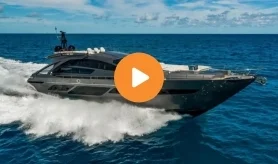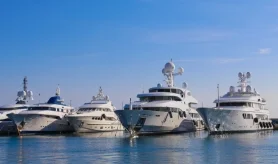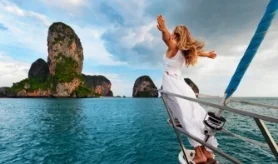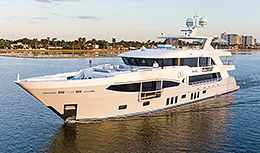- Alaskan Yachts
- Azimut Yachts
- Back Cove Yachts
- Beneteau Yachts
- Benetti Superyachts
- Bertram Yachts
- Boston Whaler
- Broward Yachts
- Buddy Davis Sportfish
- Burger Yachts
- Cabo Yachts
- Catamarans
- Carver Motoryachts
- Center Console
- Chris-Craft Yachts
- Cruisers Yachts
- DeFever Trawlers
- Dufour Sailboats
- Fairline Yachts
- Feadship Yachts
- Ferretti Yachts
- Formula Yachts
- Fountaine Pajot Cats
- Grady-White
- Grand Banks Trawlers
- Hargrave Yachts
- Hatteras Yachts
- Hinckley Picnic Boats
- Horizon Yachts
- Hydra-Sports
- Intrepid Boats
- Jarrett Bay Sportfish
- Jeanneau Yachts
- Kadey-Krogen Trawlers
- Lazzara Yachts
- Lekker Boats
- Luhrs Sportfish
- Marlow Yachts
- Maritimo Yachts
- Marquis Yachts
- McKinna Motoryachts
- Meridian Yachts
- Midnight Express
- MJM Yachts
- Mochi Craft
- Neptunus Motoryachts
- Nordhavn Trawlers
- Nordic Tugs
- Numarine Yachts
- Ocean Alexander Yachts
- Offshore Yachts
- Outer Reef
- Oyster Sailing Yachts
- Pacific Mariner Yachts
- Palmer Johnson Yachts
Adventurous Itineraries: To the Ends of the Earth
Yachting is evolving. A rising trend for active, thrilling itineraries in some of the most forbidding places on Earth is leaving bronzing on the aft deck in its wake. When the boundaries are pushed, people come back a little changed. Dropping anchor in St. Tropez may be enough for some, but when it’s not, the world awaits.
Monster Crocs vs Monster Fish

In the remote Australian Kimberley region, a visiting superyacht drops anchor off of One Tree Beach fishing camp where a small, guided fishing operation sits on a cove under an old milkwood tree. This is ground zero for some of the finest fishing on earth, where camp guests are woken by the thrashing of sharks and giant trevally in the shallows, and monster barramundi lurch for their prey with a mighty ‘boof’ sound that travels over the water.
Robert ‘Bluey’ Vaughan, owner of Kimberley Fishing, has a lifelong obsession with fishing for “ol’ bucket mouth” – high jumping, hard fighting barramundi that grow up to five foot. “They fight like a butcher’s dog,” he enthuses.
Listed by The New York Times as one of the top five places to visit in 2020, the Kimberley is a mysterious place on Australia’s rugged northwest coast: an outback landscape of rust-red gorges and thundering waterfalls and lonely archipelagos. It’s a place so wild that even the laws of nature appear suspended, like the waterfall that runs horizontally under the pressure of the 35-foot tide. And the reef that rises out of the sea with water cascading off the sides in a dull roar.
More importantly, the fishing is hair-raisingly good. Boiling tidal currents, river snags and rock bars concentrate huge bait balls that the big pelagics fall on in a frenzy. And when the wrestling is done, guests swim the waterholes in the Bungle Bungles or dive with whale sharks at Ningaloo Reef. The Kimberley is the Australia of your wildest imagination.
A local and highly experienced fishing guide is an absolute must. Bluey Vaughan offers his services and camp to visiting superyachts but advance bookings are essential. There are no marinas in the Kimberley wilderness and very few towns, so yachts will need to be largely self-sufficient for the duration of the trip. An on-board helicopter is of particular usefulness but the region is also well serviced by seaplane.
Kitesurf Oman’s Desert Winds

With huge lagoons, a 1,967-mile coastline and waves rolling in from the Indian Ocean, Oman is enjoying a meteoric rise as one of the world’s hottest new kiteboarding destinations. This politically stable, tourist-friendly country is almost virgin territory for kiteboarders, and a yacht allows guests to cruise the desert coast and access lagoons normally cut off by quicksand.
“Oman has some of the most beautiful hidden kite spots on the globe,” says Alex Friesl of Kiteboarding Oman. “Perfect shallow flat-water lagoons, places where huge desert dunes fall away straight into the sea, stunning and bizarre cliffs, and white-sand beaches crowded with thousands of flamingos.”
There are also growing kiteboarding meccas such as Masirah Island, which produces reliable kitesurfing conditions year-round and an astonishing variety of locations.
White-knuckle desert adventures await, from land-kiting with a kite buggy to surfing down the huge dunes of the Wahiba Sands in the south. Quadbikes provide thrills when airborne over the steep dunes, and 4WD convoys rumble into desert oasis canyons shaded with date palms. Guests can explore crusader fortresses and drink mint tea with Bedouin tribes, or explore the bustling city souks, opulent spa hotels and minaret skylines.
Local guides will showcase the best of Oman. As the kiteboarding industry is still in its infancy, it’s advisable for guests to bring their own gear, including replacements as there’s little in the way of kiteboarding repair shops. Due to cruising conditions, the best time for kiteboarding yacht charters is during the winter monsoon from February to April, or September to October.
Scale New Heights and Dive New Depths in Antarctica

Whether climbing up vast ice walls or descending below the ice shelf in a submarine, every sporting experience in Antarctica is heightened by the silence. There is a crispness to the air and an ever-present sense of walking in the footsteps of Shackleton and Scott. But only the foolhardy forget that the weather can turn any minute. As one of the most inhospitable places on Earth, Antarctica offers the adventure of a lifetime.
The expert guides and meticulous planning are what make yacht charters to Antarctica as safe as possible. “Our clients trust us and we will never risk their safety, but our expeditions can push boundaries and expand the horizons of what they think is possible,” says Elise Ciappara, head of yacht expeditions at Pelorus. “Sharing these types of life-altering experiences with family, friends or colleagues will inevitably bring them closer together.”
Few experiences compare to camping overnight on an ice floe near to the yacht, hearing the ice creak beneath and the sigh of whales as you drift off to sleep. Or abseiling down a glacier to play a never-to-be-forgotten game of football on the snow. On the frozen tundra that stretches out endlessly, each day brings a true adventure.
While many yachts with long ranges and a high level of autonomy can reach Antarctica, expedition yachts such as SHERAKHAN and LEGEND can push further and explore deeper with great confidence. Onboard helicopters, steel hulls and multiple Zodiac tenders are superior choices in this terrain. Note that the permissions process for Antarctic yacht expeditions can take between six to 12 months and expert guides are essential.
Request a Copy [FRANK Issue 2]
From intelligent debate to cutting-edge science, and risky sports to surreal charter experiences, FRANK does not shy away from the awkward, controversial, or questionable details. Brazen at times, amusing in spirit, and always transparent in discussion, the focus is on discovering new angles and enjoying every minute. And, of course, always being ‘frank’ about the conclusions.
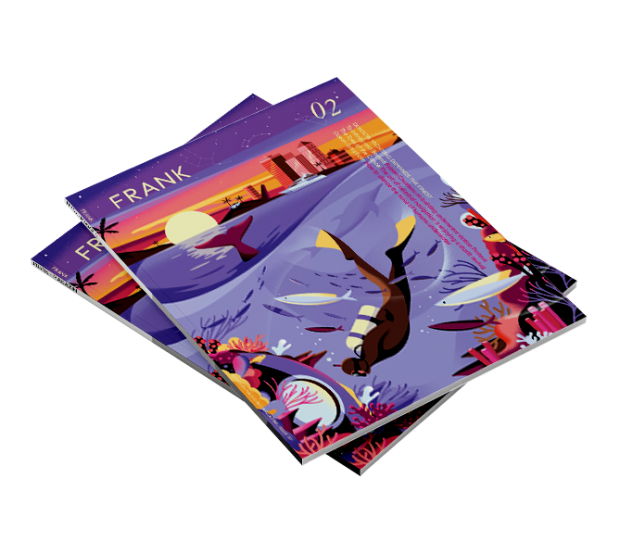
Request A Copy
